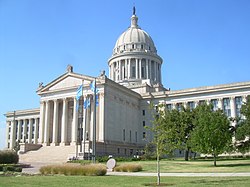 |
| Me at Books and Company, Lexington, VA 12-19-10 |
What is more Christmassy for a writer than hanging out days before December 25 in a cool small-town independent bookstore, signing your own book? Not much. Surrounded by happy, laughing book-people shopping local by buying books? Perfect.
You can't help but think of all those years of getting books for Christmas: now people are giving your book to friends and family. It warms the heart, just as reading A Christmas Carol does, every year, without fail.
You, the author, are now part of that great chain of holiday book giving, going back to Gutenberg (well, maybe starting a few years after his printing press; it took awhile, after all, for non-manuscript books to catch on, not to mention literacy). Going back, anyway, to when you were ten and a favorite aunt gave you a leather-bound copy of Little Women for Christmas and you never looked back.
This Christmas, 2010, at the end of months of Gutenberg-like revolutions in the book business, I couldn't help but think, as I signed my book near home this week in Lexington and Richmond, that all the indies I came across in my recent book tour, from Los Angeles to Washington, D.C., might not only survive but thrive once the New Book Order comes to pass.
Independent booksellers have made it this far and now nobody knows what's coming next in the book business -- except that the race may go to the small and the nimble. Social marketing is changing the game by the day. Independent booksellers are getting a cut of e-book sales. Their superb customer service and ambiance are winning hearts and minds. A passionate reaction is emerging, insisting that the bound book shall not disappear.
Anthony Powell, the English author of the 12-volume masterpiece, A Dance to the Music of Time, wrote that books do furnish a room. Let's expand on that and say that bound books do furnish a life.
You can't help but think of all those years of getting books for Christmas: now people are giving your book to friends and family. It warms the heart, just as reading A Christmas Carol does, every year, without fail.
You, the author, are now part of that great chain of holiday book giving, going back to Gutenberg (well, maybe starting a few years after his printing press; it took awhile, after all, for non-manuscript books to catch on, not to mention literacy). Going back, anyway, to when you were ten and a favorite aunt gave you a leather-bound copy of Little Women for Christmas and you never looked back.
This Christmas, 2010, at the end of months of Gutenberg-like revolutions in the book business, I couldn't help but think, as I signed my book near home this week in Lexington and Richmond, that all the indies I came across in my recent book tour, from Los Angeles to Washington, D.C., might not only survive but thrive once the New Book Order comes to pass.
Independent booksellers have made it this far and now nobody knows what's coming next in the book business -- except that the race may go to the small and the nimble. Social marketing is changing the game by the day. Independent booksellers are getting a cut of e-book sales. Their superb customer service and ambiance are winning hearts and minds. A passionate reaction is emerging, insisting that the bound book shall not disappear.
Anthony Powell, the English author of the 12-volume masterpiece, A Dance to the Music of Time, wrote that books do furnish a room. Let's expand on that and say that bound books do furnish a life.
So, while we still have them and hope we always will: God bless us -- writers, publishers, editors, booksellers, book buyers -- every one.





















